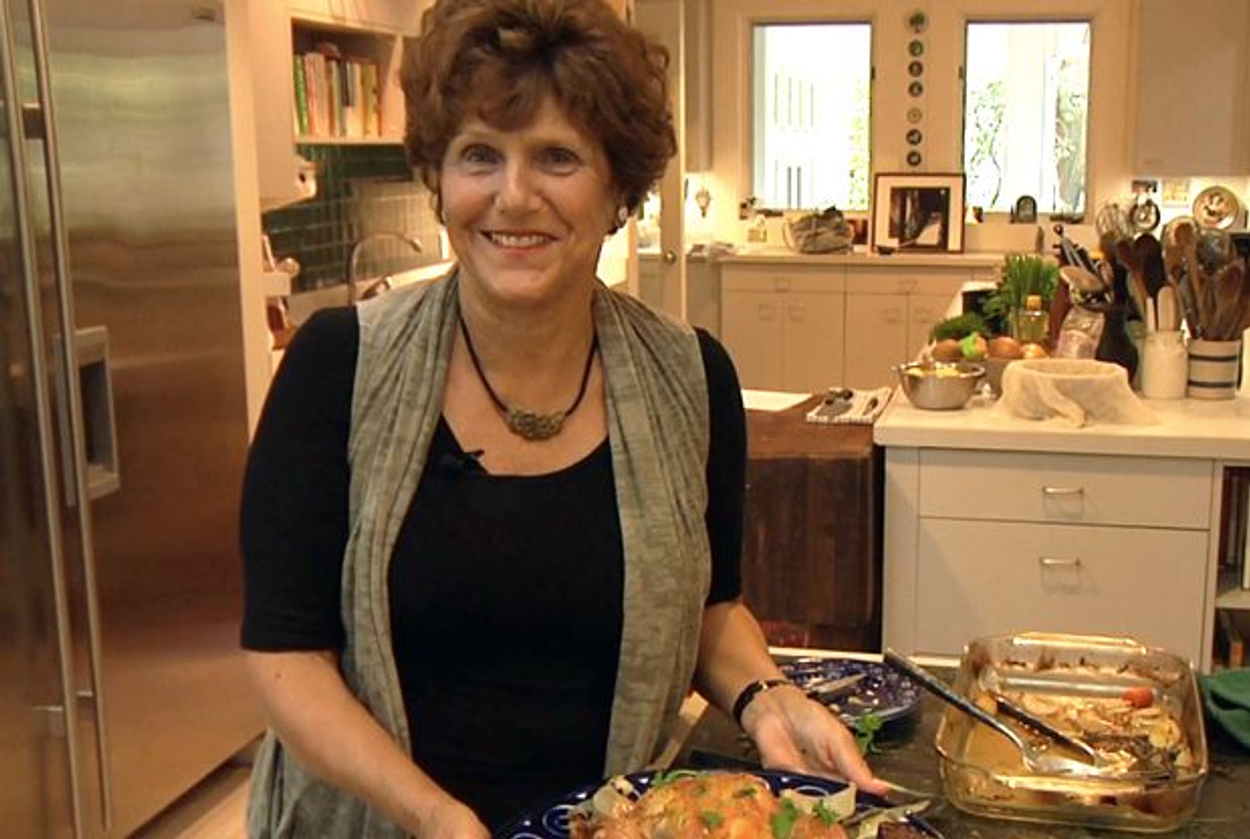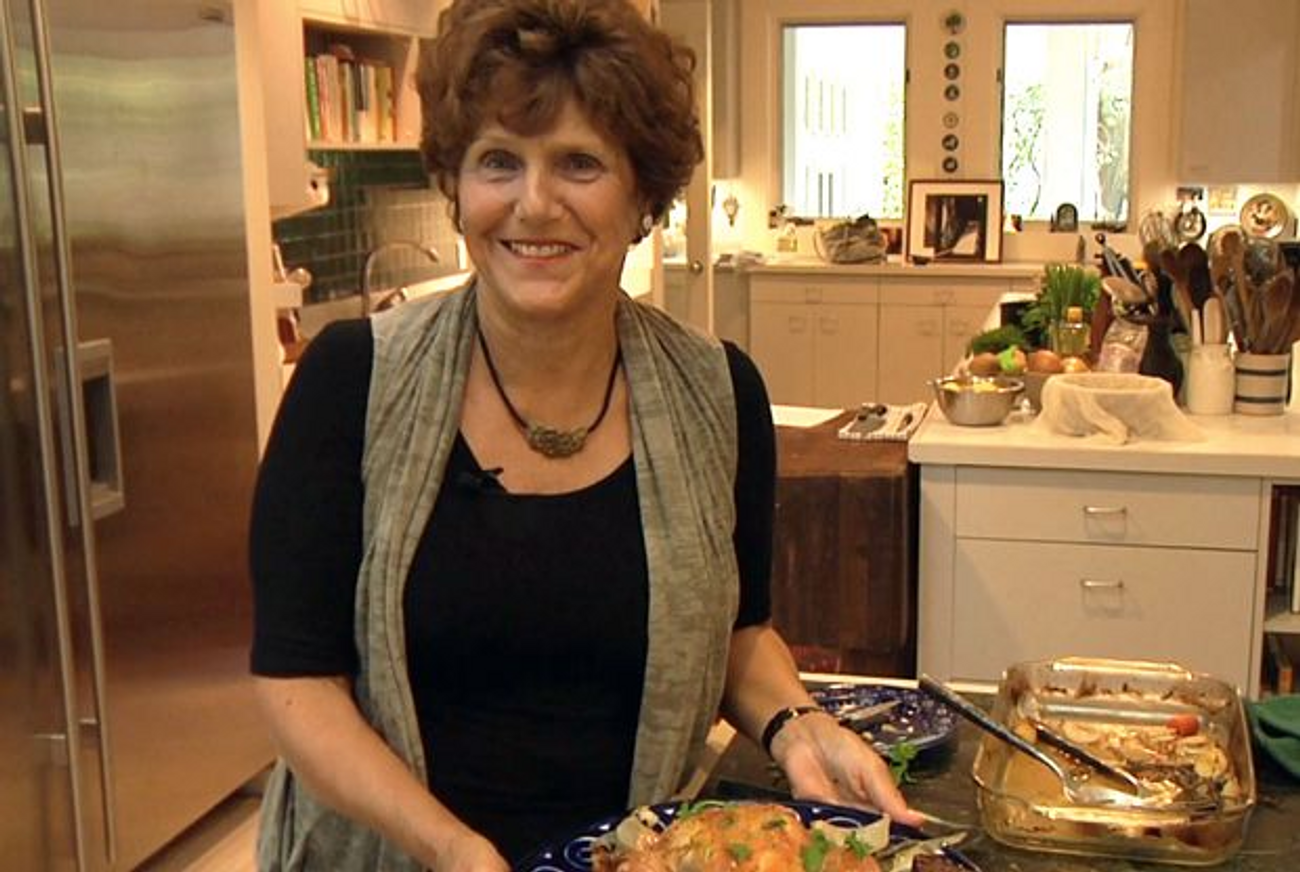The Ultimate Roast Chicken
Friday night dinner wouldn’t be the same without this Jewish staple. Here’s the tastiest recipe you’ll find.




Roast chicken is, for me, the ultimate Jewish comfort food. It’s hard to imagine Friday night without it. Yet although chicken has been a staple of Shabbat and holiday dinners since the Middle Ages, it is only relatively recently that people began to roast it. Historically, Jews simmered the chicken with rice or made a tagine or fricassee of it. Ashkenazi Jews would boil it, serving the soup as a first course and cutting off the breasts to make cutlets for the Shabbat main dish.
For hurried cooks today, roast chicken is an easy one-pot meal. I sometimes make it for Shabbat but more often cook it during the week when we have last-minute guests for dinner. And I often do the roasting in a disposable pan to bring to friends who have an illness or death in the family. People love it from the moment they smell the melding aromas of garlic, lemon, onion, and chicken.
There are lots of ways to roast a chicken, such as the Hungarian way I learned many years ago from a woman named Lea who had a restaurant in Jerusalem. She put soaked bread, mushrooms, and onions under the skin before roasting. In Paris, I learned how to do it the French way, stuffing truffles under the skin. Or you can roast chicken the way my grandmother did, by sprinkling garlic powder and seasoning salt on top of a cut-up chicken before roasting it in the oven.
Although I have made roast chicken all those ways, I have found what I consider the easiest and the ultimate roast chicken recipe, learned from a home cook in Geneva. I still vacillate about the temperature, sometimes starting it at 450 degrees and lowering after about 10 minutes to 375 and sometimes putting the chicken in a cold oven and turning it to 375 degrees. Both make for a moist chicken with crispy, caramel skin.
For this recipe, I start with a good plump 4- to 5-pound kosher broiler, or brine a nonkosher chicken in salt and garlic overnight. I cut a clove of garlic in half and rub the cut sides over the top of the chicken. Then I brush the bird with olive oil and sprinkle it with freshly cracked black pepper and a generous amount of salt. (I even toss a little coarse salt over a kosher chicken because it seems to me the producers are not salting them as much as they used to.)
I usually stuff the chicken with my secret ingredient: a preserved lemon—or if you prefer, a whole fresh lemon. I learned this technique years ago from a Moroccan Jewish lady. Since then, when I have visited Morocco or Moroccan markets in Paris, I notice that the preserved lemons are made with salt water rather than the more expensive squeezed juice from fresh lemons. You can taste the difference.
After stuffing sprigs of rosemary, thyme, and sage or whatever I have on hand inside the chicken, I scatter some more herbs around it, along with smashed garlic cloves. I then surround the chicken with lots of quartered onion, some celery, carrots, tomatoes, string beans, zucchini, potatoes—any seasonal vegetables. After drizzling the veggies with some more olive oil, I sprinkle a little more coarse salt over everything. I pour some white wine in the pan and put it into the oven for about 20 minutes per pound. After about an hour and a half, the chicken is ready, but to be certain, I test it to make sure the juice runs clear by piercing the thigh close to the body with a fork and remove it from the oven when the skin is golden and crisp.
After letting the chicken sit for a few minutes, I scoop out the lemon from the cavity and dice it. Then I put the chicken on a platter, surrounded by all the vegetables and garnished with the preserved lemon. Then I pour the gravy on top and we all enjoy this delectable dish, accented by the tang of the preserved or cooked lemon.
Joan Nathan is Tablet Magazine’s food columnist and the author of 10 cookbooks including King Solomon’s Table: a Culinary Exploration of Jewish Cooking from Around the World.